- Clone
- HP-MA4 (See other available formats)
- Regulatory Status
- RUO
- Other Names
- CD158a, CD158g, CD158h, KIR2DL1, KIR2DS1, KIR2DS3, KIR2DS5
- Isotype
- Mouse IgG2b, κ
- Ave. Rating
- Submit a Review
- Product Citations
- publications
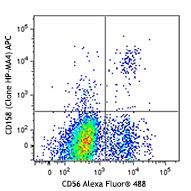
-

Human peripheral blood lymphocytes were stained with CD56 Alexa Fluor® 488 and CD158 (clone HP-MA4) APC (top) or mouse IgG2b, κ APC isotype control (bottom). -

| Cat # | Size | Price | Save |
|---|---|---|---|
| 339509 | 25 tests | ¥27,500 | |
| 339510 | 100 tests | ¥71,720 |
CD158 molecules, also known as KIRs (killer cell immunoglobulin-like receptors), are a family of transmembrane proteins with either two (KIR2D) or three (KIR3D) Ig-like extracellular domains. Some KIRs with long cytoplasmic domains contain ITIMs and posses inhibitory functions and others with short cytoplasmic region lack ITIM and have activation functions. 14 polymorphic KIR genes have been reported in humans. CD158 is mainly expressed on a subset of NK cells and a small population of CD8+ T cells. HLA-C is the ligand of CD158a/h.
Product DetailsProduct Details
- Verified Reactivity
- Human
- Reported Reactivity
- Baboon, Cynomolgus
- Antibody Type
- Monoclonal
- Host Species
- Mouse
- Immunogen
- Human NK cell clone LB2
- Formulation
- Phosphate-buffered solution, pH 7.2, containing 0.09% sodium azide and BSA (origin USA)
- Preparation
- The antibody was purified by affinity chromatography and conjugated with APC under optimal conditions.
- Concentration
- Lot-specific (to obtain lot-specific concentration and expiration, please enter the lot number in our Certificate of Analysis online tool.)
- Storage & Handling
- The antibody solution should be stored undiluted between 2°C and 8°C, and protected from prolonged exposure to light. Do not freeze.
- Application
-
FC - Quality tested
- Recommended Usage
-
Each lot of this antibody is quality control tested by immunofluorescent staining with flow cytometric analysis. For flow cytometric staining, the suggested use of this reagent is 5 µl per million cells in 100 µl staining volume or 5 µl per 100 µl of whole blood.
- Excitation Laser
-
Red Laser (633 nm)
- Application Notes
-
mAb HP-MA4 reacts with KIR2DL1 (CD158a), KIR2DS1 (CD158h), KIR2DS3, and KIR2DS5 (CD158g).
Additional reported applications include: inhibits NK cell mediated cytotoxicity and immunoprecipitation.
This clone has been tested in-house and determined to not be suitable for applications in immunohistochemistry of paraffin-embedded tissue sections (IHC-P). -
Application References
(PubMed link indicates BioLegend citation) -
- De Miguel M and M. Lopez-Botet. 2002. Inmunologia. 21:187
- Goodridge JP, et al. 2013. J. Immunol. 191:3553. PubMed
- Product Citations
-
- RRID
-
AB_2565577 (BioLegend Cat. No. 339509)
AB_2565577 (BioLegend Cat. No. 339510)
Antigen Details
- Structure
- Contains two Ig-like extracellular domains, 58/50 kD
- Distribution
-
Subset of NK cells and a small subset of CD8+ T cells
- Function
- Inhibits NK cell function, play a role in self-tolerance.
- Ligand/Receptor
- HLA-C
- Cell Type
- NK cells, T cells
- Biology Area
- Immunology, Inhibitory Molecules
- Molecular Family
- CD Molecules
- Antigen References
-
1. Zola H, et al. eds. 2007. Leukocyte and Stromal Cell Molecules:The CD Markers. Wiely-Liss A John Wiley & Sons Inc, Publication
- Gene ID
- 3802 View all products for this Gene ID 3810 View all products for this Gene ID 3808 View all products for this Gene ID 3806 View all products for this Gene ID
- Specificity (DOES NOT SHOW ON TDS):
- CD158
- Specificity Alt (DOES NOT SHOW ON TDS):
- CD158
- App Abbreviation (DOES NOT SHOW ON TDS):
- FC
- UniProt
- View information about CD158 on UniProt.org
Related Pages & Pathways
Pages
Related FAQs
Other Formats
View All CD158 Reagents Request Custom Conjugation| Description | Clone | Applications |
|---|---|---|
| PE anti-human CD158 (KIR2DL1/S1/S3/S5) | HP-MA4 | FC |
| Purified anti-human CD158 (KIR2DL1/S1/S3/S5) | HP-MA4 | FC,IP |
| FITC anti-human CD158 (KIR2DL1/S1/S3/S5) | HP-MA4 | FC |
| PerCP/Cyanine5.5 anti-human CD158 (KIR2DL1/S1/S3/S5) | HP-MA4 | FC |
| PE/Cyanine7 anti-human CD158 (KIR2DL1/S1/S3/S5) | HP-MA4 | FC |
| APC anti-human CD158 (KIR2DL1/S1/S3/S5) | HP-MA4 | FC |
| TotalSeq™-A0420 anti-human CD158 (KIR2DL1/S1/S3/S5) | HP-MA4 | PG |
| TotalSeq™-C0420 anti-human CD158 (KIR2DL1/S1/S3/S5) | HP-MA4 | PG |
| APC/Fire™ 750 anti-human CD158 (KIR2DL1/S1/S3/S5) | HP-MA4 | FC |
| TotalSeq™-B0420 anti-human CD158 (KIR2DL1/S1/S3/S5) Antibody | HP-MA4 | PG |
| TotalSeq™-D0420 anti-human CD158 (KIR2DL1/S1/S3/S5) Antibody | HP-MA4 | PG |
Customers Also Purchased
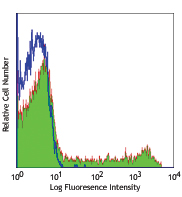
Compare Data Across All Formats
This data display is provided for general comparisons between formats.
Your actual data may vary due to variations in samples, target cells, instruments and their settings, staining conditions, and other factors.
If you need assistance with selecting the best format contact our expert technical support team.
-
PE anti-human CD158 (KIR2DL1/S1/S3/S5)

Human peripheral blood lymphocytes were stained with CD56 AP... -
Purified anti-human CD158 (KIR2DL1/S1/S3/S5)

Human peripheral blood lymphocytes were stained with CD56 AP... -
FITC anti-human CD158 (KIR2DL1/S1/S3/S5)
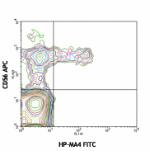
Human peripheral blood lymphocytes stained with HP-MA4 FITC ... -
PerCP/Cyanine5.5 anti-human CD158 (KIR2DL1/S1/S3/S5)

Human peripheral blood lymphocytes were stained with CD56 Al... -
PE/Cyanine7 anti-human CD158 (KIR2DL1/S1/S3/S5)

Human peripheral blood lymphocytes were stained with CD56 Al... -
APC anti-human CD158 (KIR2DL1/S1/S3/S5)
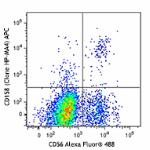
Human peripheral blood lymphocytes were stained with CD56 Al... 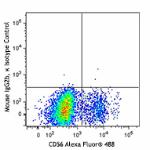
-
TotalSeq™-A0420 anti-human CD158 (KIR2DL1/S1/S3/S5)
-
TotalSeq™-C0420 anti-human CD158 (KIR2DL1/S1/S3/S5)
-
APC/Fire™ 750 anti-human CD158 (KIR2DL1/S1/S3/S5)

Human peripheral blood lymphocytes were stained with CD56 AP... -
TotalSeq™-B0420 anti-human CD158 (KIR2DL1/S1/S3/S5) Antibody
-
TotalSeq™-D0420 anti-human CD158 (KIR2DL1/S1/S3/S5) Antibody










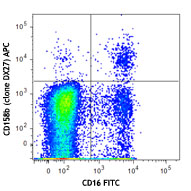

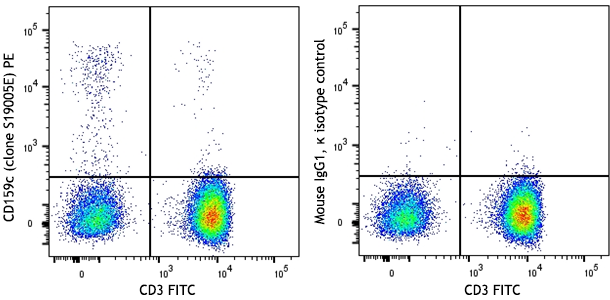



Follow Us